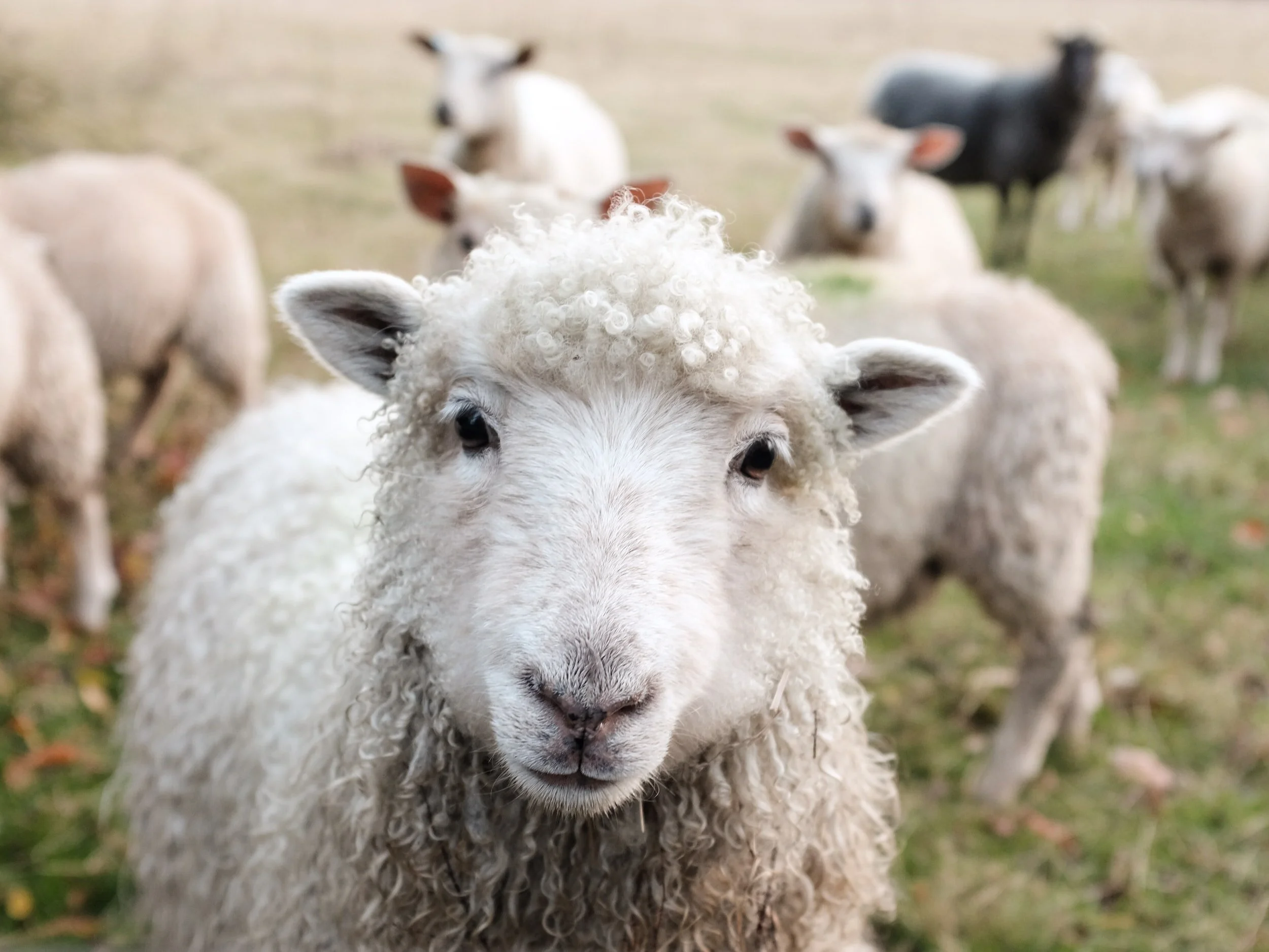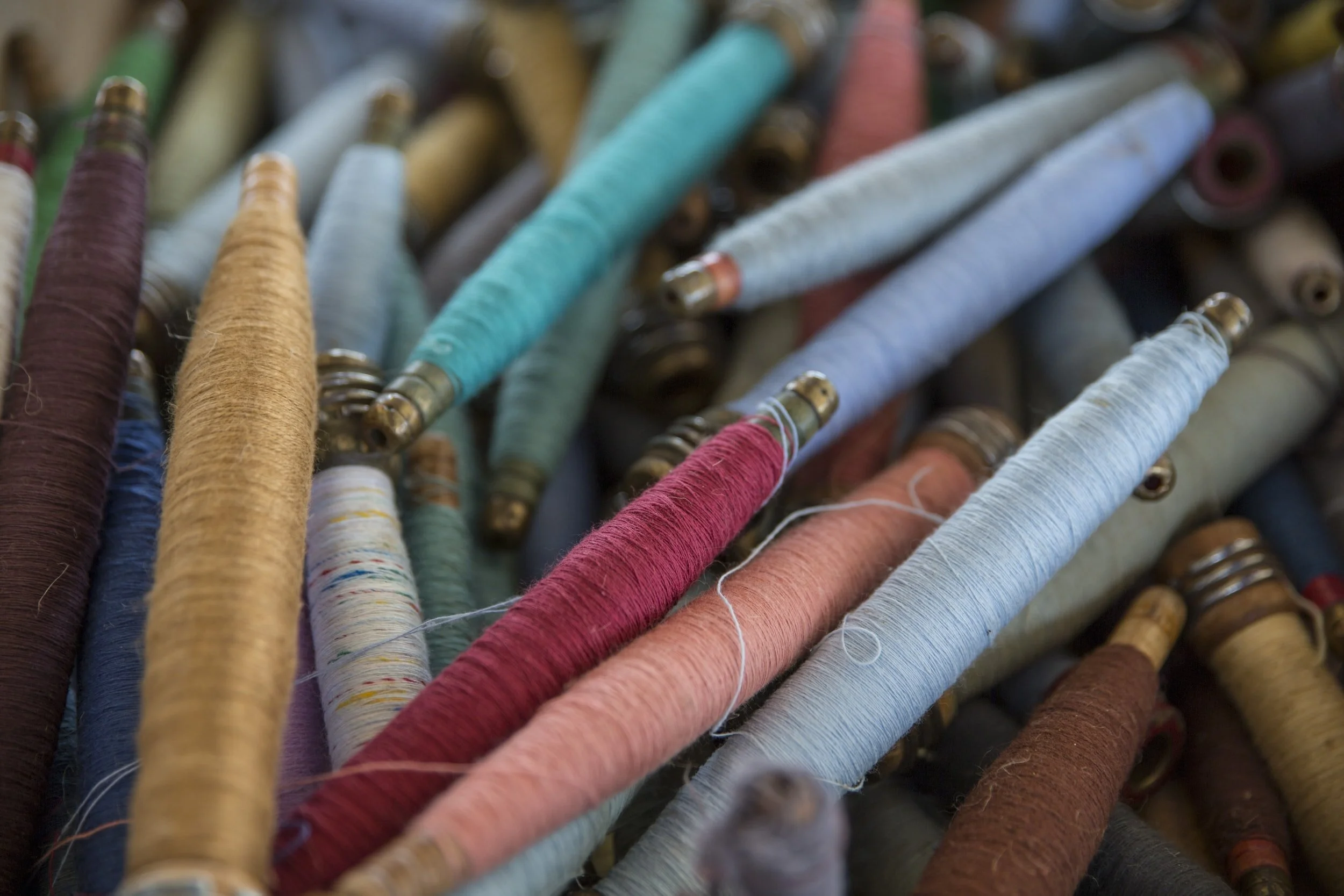Yarn substituting
You might find that a pattern calls for a certain yarn, but it’s been discontinued, or it’s too expensive, or you already have yarn that you would like to use. This is where some knowledge of substitution comes in handy.
For Example. Pattern A calls for 10 balls of DK wool. The design is a cable pattern jumper. There are a number of things to look out for here.
First - what is the overall meterage needed, ie what length of yarn is needed to complete the project? If the original design calls for 10 balls of 100m length per ball, you know you have to find 1000m of substitute yarn. If you’re not sure of the brand, or the length per ball is not mentioned, you can use an online resource to find out eg. www.ravelry.com is v good for information on unknown to you or discontinued brands. if there is no brand listed, its probably best to take an average and add a ball or two extra just in case.
Second - what kind of yarn do you need? All yarn has its own qualities. WOOL is elastic, bouncy and warm. ACRYLIC is washable, economical and hardwearing. COTTON is non-allergenic, inelastic and smooth. ALPACA is silky, inelastic and warm. SILK is warm, luxurious, inelastic and soft. LINEN is drapey, fine and inelastic. CASHMERE is soft, elastic and luxurious. As a rule of thumb, if you’re not sure, a wool blend gives you the best of both worlds. It would certainly work for the example above. For those who can’t wear wool next to the skin, an acrylic/cotton blend has a good combination of qualities - cotton for smoothness, acrylic for bounce.
Thirdly - what style of yarn does the pattern call for? A textured or cabled pattern often shows up best in smooth yarn. A plain knit (eg just stocking stitch) can be a great showcase for a slubby or speckled yarn to add interest. Some lace patterns can get lost in muticoloured yarn, so a solid or semi-solid colour might be best to show off the design. Yarn with mohair or a halo of fibre (fluffy) can add a new look to a plain knit, and retains a lot of heat for not much weight. Very good for floaty knits, laceweight or puffed sleeves.
Yarn Fibres
Wool is by far the most widely known fibre for knitting with. It’s warm, reusable, recyclable, sustainable, and found throughout the British Isles, with a history going back to the first farming. Many towns and cities owe their prominence to wool. The UK alone has over 60 breeds of sheep, all with their own special woolly qualities. Most commonly found in knitting are Merino, Blue Faced Leicester, Shetland.
Acrylic yarn is man-made from petroleum derivatives. It is hard wearing, dyes very well, and holds its shape. Ideal for kids’ clothing and for those on a budget. Common in blends for adding strength and reducing cost. Modern acrylics are almost indistinguishable from natural fibres.
Alpaca yarn is from the South American Alpaca, a camel-like animal with a long neck. It is farmed worldwide for the softness of its fleece and the array of natural colours. Its a long fibre yarn with lustre and silkiness. Its not elastic, so will have to be knit tightly to avoid stretching. Blends with alpaca have added silkiness. Similar to Camel, Llama.
Angora is from rabbits. The short fine hairs are spun into a feather light yarn. It sheds, but the warmth and softness are amazing.
Banana yarn is a vegan yarn, made entirely without animal ingredients. The process usually involves reduced water and wastage also. A modern silk-like fibre, it is ideal for holding dye and giving a shiny draped fabric.
Camel yarn is like Alpaca, and Llama - warm, soft, especially if the underhair is used for yarn. Similar drape to llama and alpaca, a not very elastic yarn.
Cashmere has been associated with Sultans and Kings for centuries, its luxurious softness a byword for wealth. It is made from the soft downy undercoat of the cashmere goat, stronger and finer than sheep’s wool, and quite the treat to touch.
Cotton - another ubiquitous yarn, common in crochet and summer weight projects. This comes from the cotton plant, the soft seed case is picked and processed, the resulting fibre is strong, can be organically farmed, and holds dye amazingly well. Ideal for allergy sufferers. Has no elasticity so needs to be knit to tension. Mercerised cotton has been processed to increase wear and shine.
Hemp is a plant fibre with amazing qualities - hemp fields use way less water than cotton and yields over twice as much fibre per plant. Its fast growing, strong, antibacterial, and softens with use. Usually to be found in blends for summer wear, this yarn gives great drape and strength to the fabric.
Linen (and flax) has been used for clothing for millennia, and is still popular. It’s strong, summery, drapy and keeps you cool in warm weather, if you still like to wear knits in the summer months. It is naturally hypoallergenic and moisture wicking. Softens with wear and use.
Mohair is from the Angora Goat, shorn to give the lustrous soft yarn we know and love. It is very warm and retains heat well, and is stronger than wool so makes an excellent choice for non-nylon socks. its light and airy and perfect in garments and shawls that are light as a feather - soft and luxurious when combined with Silk.
Nettle is another plant fibre, the stalks of which are used to make knitting yarns when cobined with cotton and linen. The fibres are hollow so trap air inside, making them very cosy to wear, and breathable at the same time. Also takes up less water than Cotton when growing. Doesn’t hold dye well, so makes an interesting visual mix in the yarn.
Silk yarn is an ancient luxury. First known of in China and the far East, the silkworm cocoons are boiled and the fibre extracted in long strands. it holds dye extremely well, gives shimmering jewel like colours, and is strongest when dry. Mixed with other fibres its lends a luxurious softness and sheen, and the amazing capacity of absorbing colour.
Tencel (also known as Lyocell) is another of those versatile plant fibres. Made from tree wood pulp, it’s 50% more absorbent than cotton while still being a breathable, moisture wicking fabric. Also takes dye well. Good for socks and garments that might benefit from airiness.
Yak and Qiviut yarns are another bit of (mostly) affordable luxury. The fibres are picked by hand from the moult or combed from the animals. The yarns are soft, lightweight, extremely warm and utterly gorgeous. The fibres are darker so are more suited to being left as natural shades or overdyed with jewel colours, which gives great depth to the finished hue. Qiviut is the more expensive of the two, and is better saved for shawls and lightweight use.






